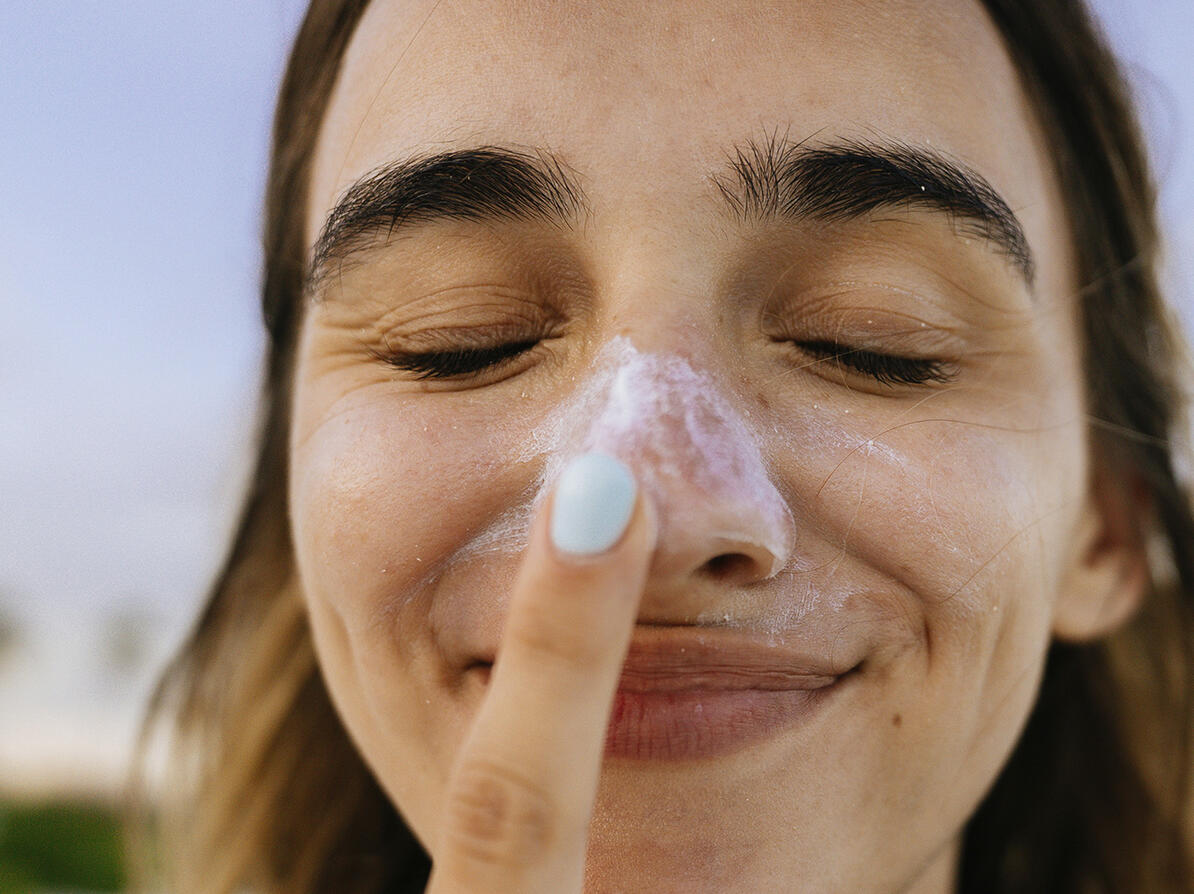Test: Chemicals in sun sticks
Sun sticks provide extra sun protection for the nose, ears and other particularly exposed areas. In the test, 7 out of 16 sun sticks are good choices without unwanted chemicals.

Sun stick without unwanted chemicals
You can use high-factor sun sticks to get extra sun protection in the most exposed areas. Such as the nose, ears, cheeks or lips.
Shade, hat and clothes provide the best protection from the sun's rays. However, sun lotions and sun sticks are an important supplement.
The test of 16 selected sun stick with SPF 30, 50 or SPF 50+ shows that almost half are good choices without unwanted chemicals.
7 products in the test receive the best chemicals rating A. See the sunscreen chemicals assessment at the bottom of this page.
Some sunscreens are suspected to be endocrine disruptors
In the test, 9 sun sticks get the worst chemical rating C as they may contain sunscreens that are suspected of being endocrine disruptors.
Among other things, these substances are on the Danish Environmental Protection Agency's list of endocrine disruptors from June 2020.
Sunscreens, sun sprays and sun sticks help reduce the risk of being sunburned. Regardless of ingredients. So use your sun lotion or sun stick no matter which one you have. Because it is not the individual product that is problematic in itself.
If you need to choose a new sunscreen, you can choose one without the problematic substances if you want to reduce your total exposure to problematic substances.
The sun protection has not been tested
The test of sun sticks is a so-called declaration test. The content declaration of the sunscreens has been reviewed for ingredients that are suspected of being endocrine disrupting, allergenic or problematic for the environment.
We have not tested the ability of sunscreens to protect against UVA and UVB rays.
About the test
-
The sun sticks in the test have a factor of 30, 50 and 50+. They were purchased in May 2021. After purchase, we sent the product names and ingredient lists to the manufacturers to check that the products are not obsolete and that the ingredient lists are correct.
The test is a declaration test. I.e., it is a review of the ingredients appearing on the ingredient lists of the products. Thus, the products have not been tested with chemical analysis in a laboratory nor tested how well they protect against the sun.
The ingredients of the sunscreens have been assessed in relation to whether, for example, they are suspected of being endocrine disrupting, allergenic or problematic for the environment.
In the app Kemiluppen you will find reviews of several sun stick and also sun lotions. The assessment of the sun stick in this test is identical to the assessment of the sun care products in Kemiluppen.
-
We have tested 16 sun sticks. They are distributed as follows:
- 7 sun sticks get the best chemicals rating A.
- 9 sun sticks get the lowest chemicals rating C. They contain one or more substances suspected to be endocrine disruptors.
These unwanted substances are found in the sun stick
Substances that the Danish Consumer Council THINK Chemicals consider undesirable in the studied sunscreens:
- Ethylhexyl salicylate is a sunscreen suspected to be endocrine disrupting. Found in 7 sun sticks.
- Octocrylene is a sunscreen suspected to be endocrine disrupting. Found in 6 sun sticks.
- Homosalate is a sunscreen suspected to be endocrine disrupting. Found in 3 sun sticks.
- Ethylhexyl methoxycinnamate is a sunscreen suspected to be endocrine disrupting. The substance is also problematic for the environment. Found in 1 sun stick.
- Benzophenone-3 is a sunscreen suspected to be endocrine disrupting. The substance is also problematic for the environment. Found in 1 sun stick.
- BHT is an antioxidant suspected to be endocrine disrupting. Found in 1 sun stick.
Consider what substances should be in your sun stick:
- Perfume can cause allergies. It may therefore be a good idea to limit how much perfume you are exposed to overall.
- The same goes for plant extracts that can cause allergies.
- Some of the perfume substances can also be problematic for the environment.
-
- Scan your sun stick with the Kemiluppen app and find a sun stick free of unwanted substances.
- Avoid the sun between 12 and 15 o'clock, where it is strongest. Even with sunscreen, do not lie in the sun for too long.
- Shade, clothing and sun hats are the best sun protection and are furthermore without problematic chemicals.
- Children are especially exposed to the sun. Children under 1 year must be in the shade. Older children should also have primary sun protection other than sunscreen.
- Use the right factor. Minimum factor 15 in Denmark and minimum factor 30 in countries where the sun is stronger. Also remember extra factor if you are on or by the water.
- Remember to re-lubricate regularly, and especially if you sweat a lot, bathe, dry yourself in a towel and other things that make the sunscreen disappear.
-
The pharmacy
"Apoteket's Asthma-Allergy-Declared and Nordic Ecolabelled Sun Series has been developed with the aim of providing the consumer with safe, secure and effective protection against the sun's UVA and UVB radiation - with the greatest possible consideration for the environment. Based on the latest knowledge, we are hand on a new, reformulated version of Apoteket's sun pin SPF 50+, so that the entire Apoteket's Solar Series can soon get the green A-rating again. "
